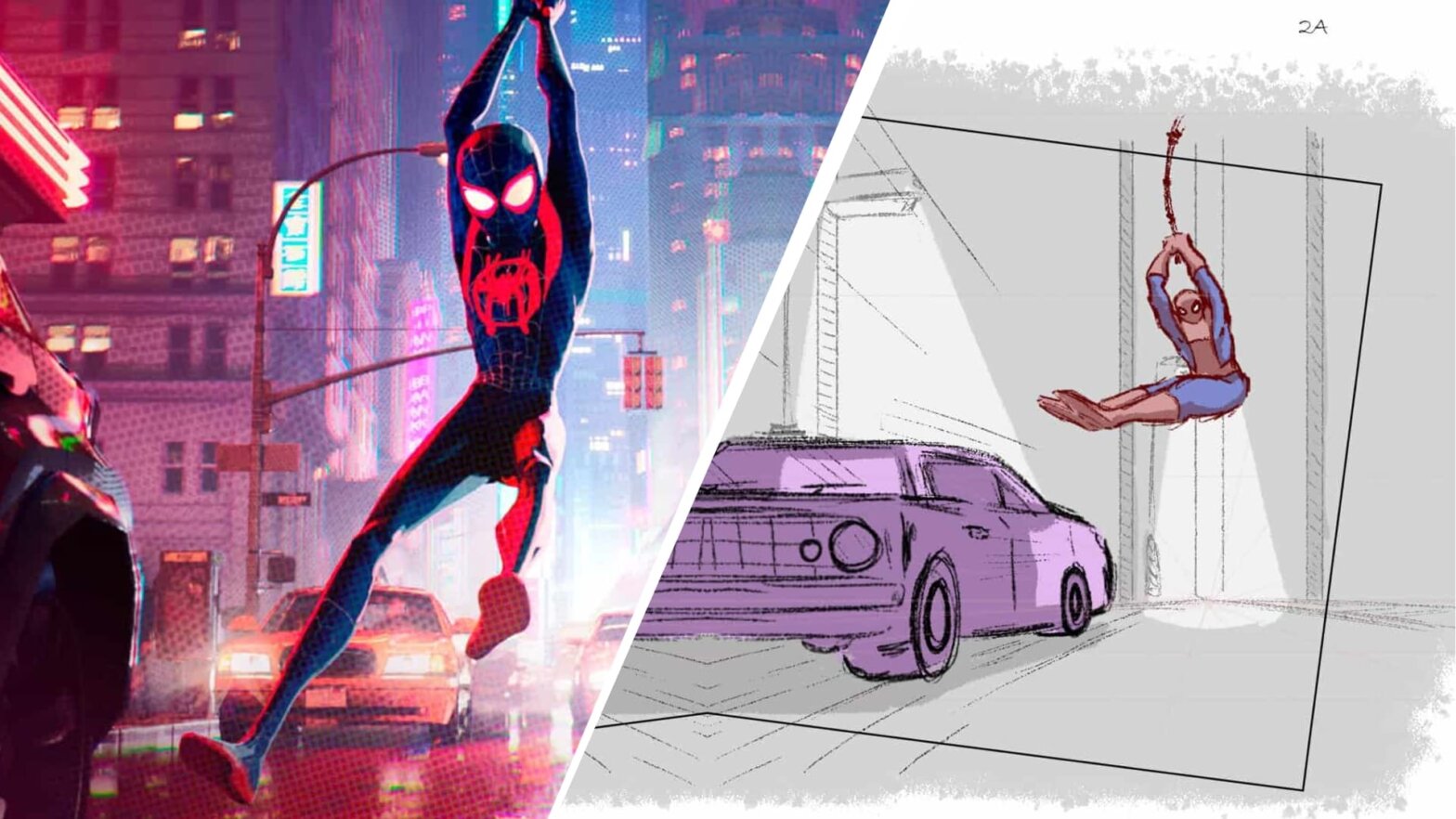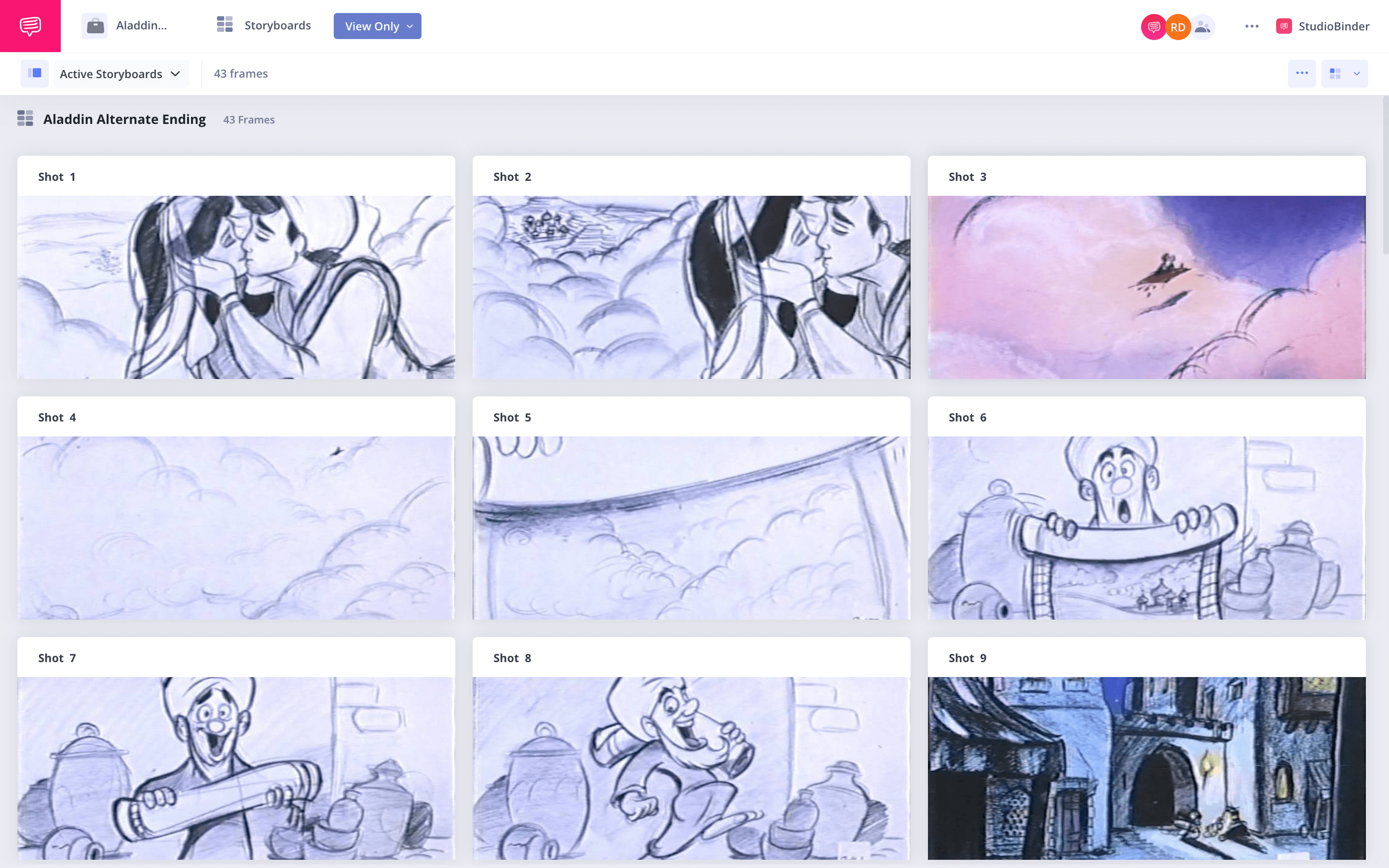Whether you’re making an animated commercial, a live-action short, or a feature film, animatics will help ensure a solid finished product. You’ve probably heard of storyboards and might have seen animatics before, even if you didn’t know that’s what they’re called.
So, what is an animatic and what makes them so useful?
In this post, we’re going to provide an animatic definition, discuss the reasons why any project can benefit from them and provide some real-world examples. The process of how to make an animatic is much simpler than it might sound. If you’ve already generated storyboards, you’re just one step away.
Animatic definition
Animate a storyboard
What is an animatic? They are a crucial step to any project, including various types of animation and live-action. They technically count as animation but don’t worry, you don’t have to be an animator to get the most out of them.
Let’s start with a quick animatic definition.
ANIMATIC DEFINITION
What is an animatic?
An animatic is a string of storyboard images edited together with sound to illustrate how a sequence will flow in motion. It’s a next-level technique after storyboarding. They aren't always necessary, but they do provide a fuller sense of what the finished project will look and sound like. While animatics are usually all the time in animation, even live action films will use them, especially for complex action or visual effects scenes.
An animatic is basically an animated storyboard. The same images you’ve already created as a storyboard are now put into a video and can include dialogue, sound effects, and music.
Obviously, it requires a storyboard to be completed beforehand but there is a clear difference between a storyboard vs animatic.
We’ll cover those differences in the next section.
Difference between storyboard and animatic
Give storyboards life
Storyboards and animatics are closely related steps in the pre-production process but they are not the same thing. One comes before the other in the workflow but they are both designed for one purpose: finding and focusing the visual storytelling.
We’ve already defined animatic, so let’s quickly define storyboard.
Storyboard Definition
What is a storyboard?
A storyboard is a visual representation of a film sequence and breaks down the action into individual panels. It is a rough approximation of how the sequence will unfold. A storyboard is similar to a trial-run for your finished film, video, or commercial in what looks like a comic book.
Elements of a storyboard:
- Comprised of a sequence of drawings, sketches, reference images or photographs of stand-ins.
- Provides visual guidance for the look, feel, and movement of the project.
- Indicates the staging of actors and camera placement.
- May include written dialogue and notes on sound direction.
The difference between a storyboard vs animatic is rather large in terms of how they help focus the storytelling. Creating a storyboard is the starting point for visually designing your project. It allows for the broad strokes of your story to come through, including camera movement and shot composition.
The next step is to take those storyboards and animate them with an animatic. You’re now one step closer a finished film.
Having an animated storyboard is hugely beneficial to any project, especially an animation. Now, let's highlight those benefits.
Why Use Animatics?
Create a rough draft of your project
Animatics can be used for live-action films but their biggest benefit is for animation. There is much less flexibility in animation compared to live-action, where you can capture multiple takes of a single shot until you find the best one. These optional takes and the ability to edit them together doesn’t really exist in animation.
In animation, you’re “shooting” and “editing” at the same time. For more, check out how to direct an animated film.
With animation, it might take a team of people hours and hours just to render one second of film. Multiply that into a 90-minute movie and you’ve got years of work. For this process to be as efficient as possible, each shot and moment in an animated film needs to be tested and fine-tuned as early as possible.
In many cases, entire sequences can make it all the way to the animatic stage before being cut, as was the case with Aladdin's alternate ending.
Here's a storyboard of that sequence we imported into StudioBinder's storyboard creator.
Aladdin Alternate Ending
This is what makes them a necessary part of the process. Using low-res images, you can save yourself and your team hours of work nailing down timing, performance, camera, and movement.
What are Animatics for Live-Action?
Plan for VFX in live-action
Now we know what an animatic is and how it is used in the animation pre-production process. Let’s turn to some examples of movie animatics and you can see the benefits for yourself.
For a massive movie like Iron Man 3, pre-visualizations are common practice. Just like animation, action spectacles cost a lot of money and take a lot of time and effort. With sequences so heavily dependent on CGI, just like animation, it just makes sense to figure the sequence out in rough form beforehand.
VFX animatic example for Iron Man 3
The following example is for Star Wars: Episode 1 - The Phantom Menace. This is an interesting example because it uses a combination of live-action, green screen, and CGI.
VFX animatic example for The Phantom Menace
The next example is for Wes Anderson’s The Grand Budapest Hotel. If you’re familiar with Anderson’s directing style and his attention to detail, the fact that he creates animatics shouldn’t surprise you.
Live-action animatic example for The Grand Budapest Hotel
As you can see, animatics for live-action are sometimes necessary and they provide similar benefits to help visualize and refine the storytelling. In the next section, we’ll look at some examples for animated film and television.
WHAT ARE ANIMATICS FOR Animation?
Begin the animation process
Animatics are necessary for animation and companies like Disney have been using them for decades. Below are some examples from classic and recent films with side-by-side comparisons.
Our first example comes from hit show Rick and Morty. Notice how the sound design really helps us imagine what the finished product will actually look like.
Rick and Morty Animatic
One of the best stop-motion films, Kubo and the Two Strings, would not be possible without a pre-visualization process. Everything from the camera movement to the manipulations of the armatures needs a blueprint.
Animatic vs. Final Product • Kubo and the Two Strings
Let’s look at a clip from everyone’s favorite Bikini Bottom resident: Spongebob. You can see how much of the comedic timing is pre-determined before the complete animation is even begun. In fact, the Nick Animation YouTube channel has a number of these videos!
Animatic example for Spongebob Squarepants
In this animatic example from Coco, notice how the background details are much less important. This example focuses on character blocking and performance. Remember that you can use animatics for very specific purposes in a scene and that you don’t need to render a complete image to get them.
Animatic example for Coco
As we’ve discussed, animatics are really helpful in timing out the scene, especially for a comedy where timing is everything.
There’s probably no example better suited to illustrate how crucial timing is than the DMV scene from Zootopia.
Animatic example for Zootopia
For the Disney film, Hercules, we have a hybrid example that uses live-action and animated storyboards. Sometimes, if you have the time and resources, you can film portions of your scene with your actors, especially to capture natural movement and performance.
Animatic example for Hercules
Here’s a short film from start to finish in animatic form. You can see there’s just enough animation to get the timing and performances right. The sound effects and music really carry a lot of the weight. This is a perfect example of how it lays the foundation for the entire film.
Animatic example for The Fisherman
Finally, we have a really interesting example of an “animatic.” For the film Rango, director Gore Verbinski had a novel idea. He filmed the actors like a no-budget live-action film to capture their physical performance as well as their voice. In fact, this might not count as an animatic per se, but it might be a whole new way to approach animation.
“Animatic” example of Rango
Animatic Collaboration
Hire a storyboard/animatic artist
Now that you’re an expert on what goes into a storyboard and an animatic, you might still feel like your drawing and animation skills are not up to snuff.
Don’t worry, there are many artists out there who are up for the task.
If you’re looking for someone to assist in this area of your pre-production, look no further. There are resources online to find & hire a storyboard artist.Related Posts
Up Next
Get yourself a storyboard artist
As we've discussed, animatics start with storyboards — and maybe you're not the best artist. Don't worry, there are tons of legitimate artists out there looking for work. Don't waste time scouring the internet, we found the best websites out there to hook you up with professional and committed artists.
Up Next: Hiring a Storyboard Artist →
Showcase your vision with elegant shot lists and storyboards.
Create robust and customizable shot lists. Upload images to make storyboards and slideshows.

